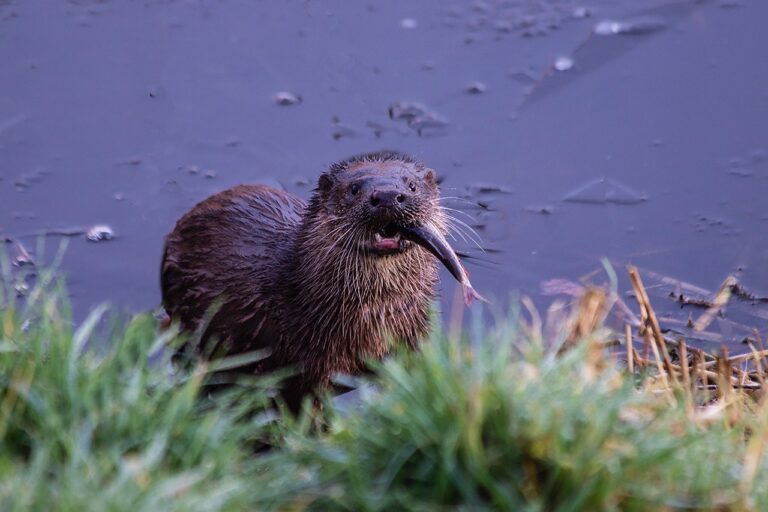
10 am on Saturday, the first Saturday without high wind for weeks, and I am visiting Washington Wetlands Centre for the first time in years. The viewing room is wonderfully familiar but there is no time for dilly-dallying down memory lane as we are whisked into the training room. ‘We’ is a group of volunteers being trained to survey otters for the Otter Network’s annual survey in April. Looking around the room, it’s easy to feel optimistic about the future of environmental causes as almost all of the volunteers are young and keen; one lady was returning to be retrained, having driven that morning from Hull.
The training is detailed and fascinating. Living on the banks of the Tyne, I have volunteered from interest in the ecology of the river habitat generally, rather than a passionate interest in otters. I am in the minority. Our trainer, Vivien, shares with us the stats on the resurgence of these creatures nationally and across the North East. The principle focus rivers for the survey are the Tees, Wear and Tyne with otters defending a surprisingly large territory (up to 40km of waterways for dog otters). Track silhouettes are shared, together with samples of otter spraint which can be colourful (‘red shows they’ve been eating crayfish’) and fragrant (‘sometimes compared to jasmine tea’). I learnt a lot about otters and reached some conclusions about my future consumption of jasmine tea.
The survey will be carried out in late April; each volunteer will search their allotted slot twice, recording any evidence of otter activity on both days. As otters cover such a large territory, the data sent back to Vivien via the app allows her to work out the likelihood of the evidence being the same otter traversing its territory with multiple holts or whether there are otters with territories cheek by jowl. It’s fascinating stuff and, as ever, a lot of deducing takes place around the bald data generated during the survey.
Despite their playful and curious nature, Vivien was keen to moderate our expectations of actually witnessing an otter. They are just too wary to be caught out. So, being adept at spotting the five-toed footprints and distinguishing them from the inevitable dog and fox prints was a big focus of the classroom training. Armed with our facts and the downloaded project app, we were ready to explore the wild part of Washing Wetlands and venture beyond-the-fox-proof fence.
Spotting signs was surprisingly easy at WWC and we were quickly using the sandy mud flaps to find the characteristic footprints. The lower sections, closer to the Wear, brought us our first sighting of spraint which had been delivered – exactly as we had been advised – on a small bridge. It’s hard to explain why poking droppings with a stick is so satisfying. Perhaps it’s because we were all curious about this at some point and were promptly stopped by a well-meaning adult. Curiosity is strong, but partially-sated curiosity is stronger.
With nothing more to the day, we would have been fully briefed and raring to go for the survey. Nature, of course, always has other plans and this time they were favourable. Noticing a family photographing the river surface, we followed suit and were lucky enough to see an otter swimming around a meter from the bank. We had been trained to be critical as many otter sightings are actually mink but there was no mistaking the cream bib and sinuous twists as she dived.
I am looking forward to practising my skills before the survey and hope to see some of the otters of the Gosforth Nature Reserve first hand too. For more details about spotting otters, the Otter Network website is a good port of call.
Words by Kirsten Johnson